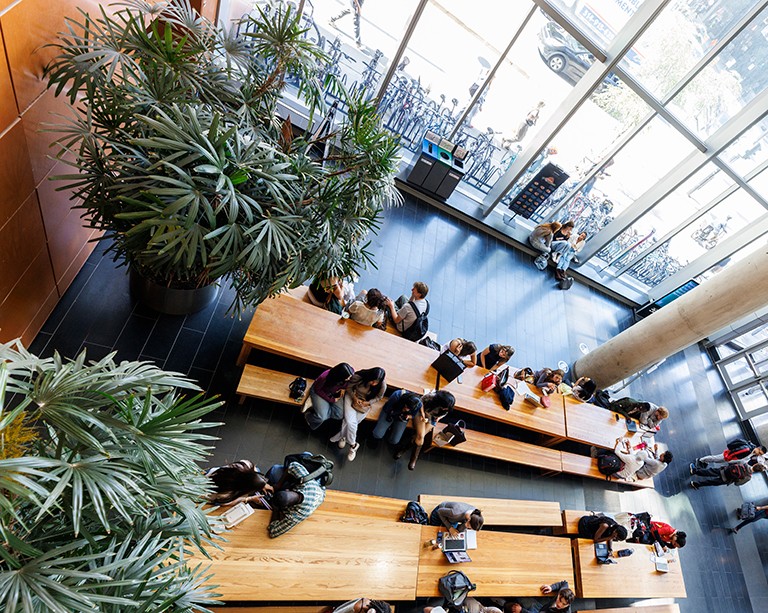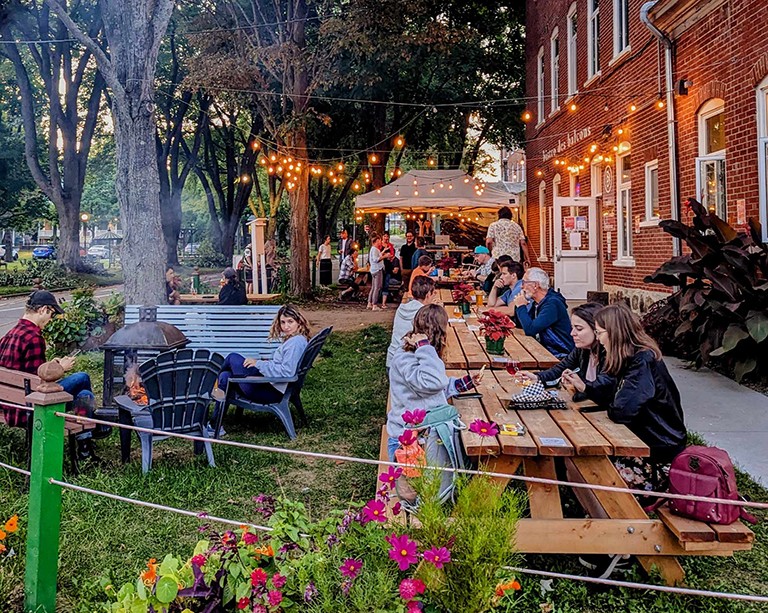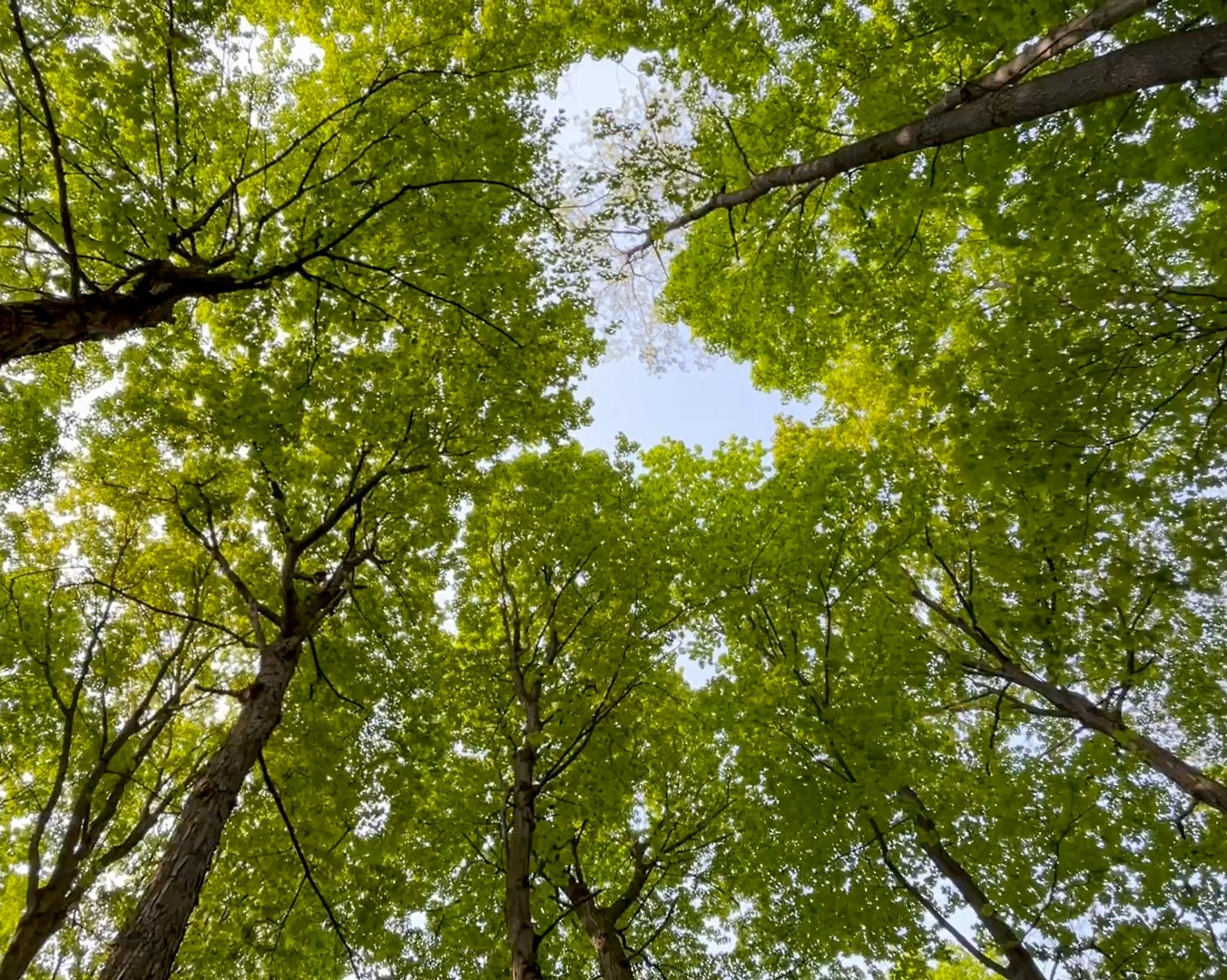2 Concordians are finalists in the Canada-wide Science Exposed photo competition

Concordia engineering researchers Hani Jazaerli (MASc 19) and Giuseppe Di Labbio are among the top 20 entrants in this year's Science Exposed national scientific research image contest.
Organized by the Natural Sciences and Engineering Research Council of Canada (NSERC), the contest showcases images that come out of Canadian scientific research. It aims to promote public interest in science in a creative way.
Jazaerli recently graduated from Concordia with a master’s in mechanical engineering under the supervision of professors Ali Dolatabadi, Christian Moreau and Martin Pugh. Di Labbio is a mechanical engineering PhD candidate in the Laboratory of Cardiovascular Fluid Dynamics.
Voting for the 2019 People’s Choice Award is now open to the university community and beyond. Both Concordia researchers are feeling excited about the opportunity to gain wider exposure for their work.
 Giuseppe Di Labbio and Hani Jazaerli.
Giuseppe Di Labbio and Hani Jazaerli.
The image represents the core of my research
Can you explain your Science Exposed image (top)?
Hani Jazaerli: “A winter night in Quebec” was taken at Concordia’s Thermal Spray and Multiphase Flow Laboratories with the help of a technique known as “confocal laser microscopy” used for the purpose of preventing ice build-up on the aerodynamic surfaces of aircraft.
My supervisors encouraged me to participate in the expo due to the unique image that we were able to collect, as it has a combination of oil, ceramic and metal.
How does your image illustrate your research at Concordia?
HJ: The image represents the core of my research, where we can see the oil penetrating the micro-pores and swimming between the pillars. The main purpose of that research is to maintain the oil on the metal’s surface for the longest period of time after applying harsh conditions on the surface, such as icing and de-icing at high air speed.
How are you feeling about being a contestant in the Science Exposed competition?
HJ: I know that I am competing with very good students and researchers from different fields, but I am confident about my image and hopefully I will be lucky enough to get people’s attention and votes.
What are your plans for the future?
HJ: Currently I am working at Aviya Aerospace Systems, where my role is to be a testing engineer for avionic controls systems. So you could say I am on my way to achieving my dreams.
 “Laminar healthy vortices and leaking heart valves” by Giuseppe Di Labbio
“Laminar healthy vortices and leaking heart valves” by Giuseppe Di Labbio
I hope that my image will inspire people to do science and engineering
Can you explain your Science Exposed image (above)?
Giuseppe Di Labbio: My image, “Laminar healthy vortices and leaking heart valves,” shows what the blood flow in a healthy heart looks like as it fills, and how this pattern changes when one of the heart valves leaks.
Specifically, this represents a disease known as aortic valve regurgitation, which affects the left ventricle — the powerhouse of the heart.
How does your image illustrate your research at Concordia?
GDL: The image is directly related to the subject of my doctoral dissertation. I’m researching the physics underlying the blood flow resulting from this disease and how it can be used to detect the disease in its earliest stages. The image shows what’s called the finite-time Lyapunov exponent field, which is really a beautiful and tangible way to visualize a flow.
How are you feeling about being a contestant in the Science Exposed competition?
GDL: For the most part, it is just a pleasure to have my research showcased in such a way. The outcome is only secondary to the hope that the image will inspire people to do science and engineering.
What are your plans for the future?
GDL: Ultimately, the hope is to become a professor someday. I love to teach and do research. I will be graduating from the PhD Program in Mechanical Engineering in early September and will start a postdoc at Polytechnique Montréal.
Check out Hani Jazaerli's and Giueseppe Di Labbio’s Science Exposed images and place your vote for the 2019 People’s Choice Award by September 15.




